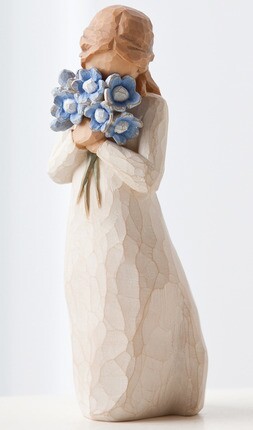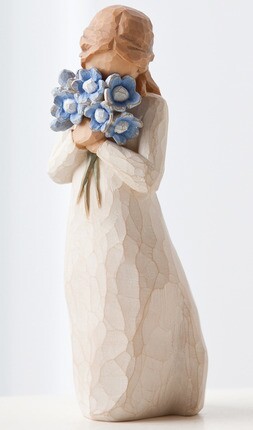With their bright blooms and endless varieties, it is little wonder that flowers have inspired Church leaders’ talks for years. For your springtime pleasure, we’ve compiled a list of flower analogies and stories from general authorities and auxiliary leaders.

The Golden Chrysanthemum and the Old Bucket
“Mary was visiting with a friend who had a greenhouse. As she looked at her friend’s flowers, she noticed a beautiful golden chrysanthemum but was puzzled that it was growing in a dented, old, rusty bucket. Her friend explained, ‘I ran short of pots, and knowing how beautiful this one would be, I thought it wouldn’t mind starting in this old pail. It’s just for a little while, until I can put it out in the garden.’
“Mary smiled as she imagined just such a scene in heaven. ‘Here’s an especially beautiful one,’ God might have said when He came to the soul of the little old man. ‘He won’t mind starting in this small, misshapen body.’ But that was long ago, and in God’s garden how tall this lovely soul must stand!” —President Thomas S. Monson, “Charity Never Faileth,” general conference, October 2010”

Removing Negative Weeds and Cultivating Positive Flowers
“We grow in two ways—removing negative weeds and cultivating positive flowers. The Savior’s grace blesses both parts—if we do our part. First and repeatedly we must uproot the weeds of sin and bad choices. It isn’t enough just to mow the weeds. Yank them out by the roots, repenting fully to satisfy the conditions of mercy. But being forgiven is only part of our growth. We are not just paying a debt. Our purpose is to become celestial beings. So once we’ve cleared our heartland, we must continually plant, weed, and nourish the seeds of divine qualities. And then as our sweat and discipline stretch us to meet His gifts, ‘the flow’rs of grace appear,’ like hope and meekness. Even a tree of life can take root in this heart-garden, bearing fruit so sweet that it lightens all our burdens ‘through the joy of his Son.’ And when the flower of charity blooms here, we will love others with the power of Christ’s own love.” —Elder Bruce C. Hafen, “The Atonement: All for All,” general conference, April 2004
Like a Growing Seed
“Becoming Christlike is a matter of daily spiritual growth. As a flower develops from a seed, as a mature adult develops from a tiny child, so we can grow spiritually day by day, eventually into Christlike personalities.” —Mark E. Petersen, “Believers and Doers,” general conference, October 1982
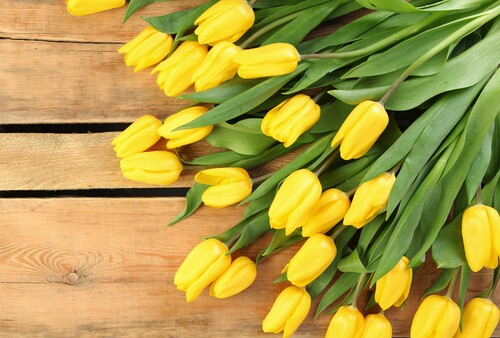
Friendly Yellow Tulips
“I talked with a Relief Society member about a visit she had made. It was to a woman who would soon lose her husband suddenly and tragically. In recent years the woman had only intermittent contact with Relief Society.
“The visitor prepared by stopping at a shop to buy flowers. It was a season when the tulips were stacked for sale in many colors. She chose one color, her favorite, but then felt impressed to try another. She didn’t know why she selected yellow, but she did.
“When she presented the yellow tulips at the door, the woman smiled and said, ‘Come. See my backyard garden.’ It was filled with yellow tulips in full bloom. The woman said, ‘I was just wondering if I should cut some for the house. But now I can leave them and enjoy them a little longer in my garden because you brought me these.’ They chatted pleasantly as if they were old friends. From that impression to bring some flowers and to choose yellow tulips, that visiting teacher had evidence that she was on the Lord’s errand. When she told me, I could hear the joy in her voice.” —President Henry B. Eyring, “The Enduring Legacy of the Relief Society,” general conference, October 2009
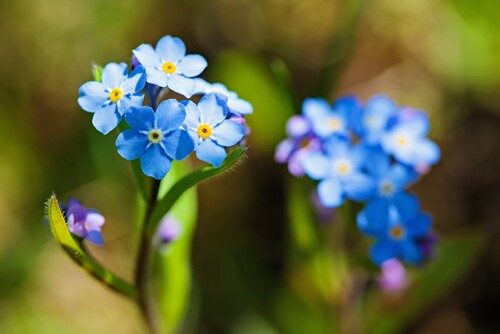
Forget-Me-Not
“A while ago I was walking through a beautiful garden with my wife and daughter. I marveled at the glory and beauty of God’s creation. And then I noticed, among all the glorious blooms, the tiniest flower. I knew the name of this flower because since I was a child I have had a tender connection to it. The flower is called forget-me-not.
“I’m not exactly sure why this tiny flower has meant so much to me over the years. It does not attract immediate attention; it is easy to overlook among larger and more vibrant flowers; yet it is just as beautiful, with its rich color that mirrors that of the bluest skies—perhaps this is one reason why I like it so much.
“And there is the haunting plea of its name. There is a German legend that just as God had finished naming all the plants, one was left unnamed. A tiny voice spoke out, ‘Forget me not, O Lord!’ And God replied that this would be its name.
“Tonight I would like to use this little flower as a metaphor. The five petals of the little forget-me-not flower prompt me to consider five things we would be wise never to forget.” —Elder Dieter F. Uchtdorf, “Forget Me Not,” general conference, October 2011
To help remember this beautiful lesson, get thisbeautiful Willow Tree "Forget M

e Not" sculpture for your home or check out this unforgettable Forget Me Not gift book by Elder Uchtdorf. Or, for the young women in your life, get a beautiful forget-me-not necklace or braceletto help them remember their divine potential.
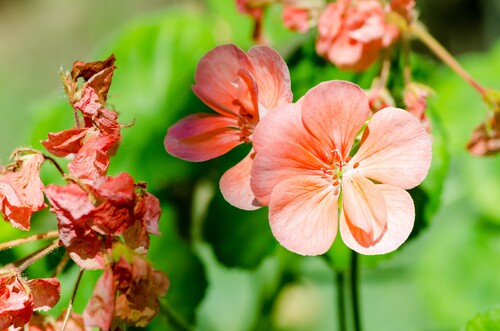
Seeing Beyond Wilted Flowers
“A . . . group who do not find joy are distracted by magnifying small areas of imperfection so as to drive out happiness. Some have allowed their own perceptions of imperfection to cloud the reality of their lives. An objective outsider observing them would conclude that they should be joyful. But they do not feel to rejoice. They are like the couple who have been invited to visit a beautiful garden. Instead of celebrating the visual feast, they see only the few wilted flowers and weeds and the relatively small areas which are not beautiful to behold. They do not feel the garden meets their expectations. In like manner, they are unduly critical of themselves and of others. They have become accustomed to exaggerating small imperfections and underestimating great blessings and have lost the capacity to rejoice.” —Elder Quentin L. Cook, “Rejoice!” general conference, October 1996
Blooming Memories
“In my garden of memories no rose is more beautiful or fragrant than the rose brought to bloom by my participation in the welfare effort.” —President Thomas S. Monson, “The Bishop—Center Stage in Welfare,” general conference, October 1980
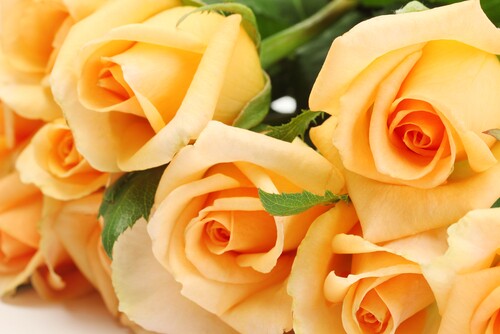
The Wonders of a Rose
“I gave my wife, Barbara, a dozen roses for a valentine. They were a delicate shade of peach in color and had a rich scent. Barbara put them in a vase and placed them on the table in our family room. As the days passed, the family watched the blossoms unfold from buds to full flower.
“As I watched this miracle, I became curious about roses. I was amazed to learn from a botanist friend that there are thousands of different varieties of roses. Inside each rose is a giant storehouse of genetic coding that develops a seed or a slip into roots, stems, thorns, leaves, colors, and blooms. . . .
“This experience led me to consider the myriad forms of plant and animal life that thrive in astounding balance upon the earth. My esteem for our little roses took on an element of wonder and reverence. I pondered the power of the creative genius who lovingly provided such marvels for his children. I thought then how important it is for every human soul to see and appreciate the glory and grandeur of God in everything about us.” —President M. Russell Ballard, “God’s Love for His Children,” April 1988
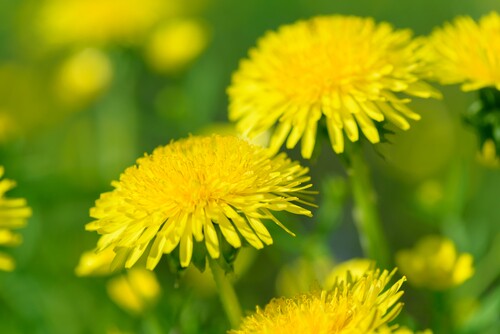
The Parable of the Dandelion
“Once there was a man who enjoyed taking evening walks around his neighborhood. He particularly looked forward to walking past his neighbor’s house. This neighbor kept his lawn perfectly manicured, flowers always in bloom, the trees healthy and shady. It was obvious that the neighbor made every effort to have a beautiful lawn.
“But one day as the man was walking past his neighbor’s house, he noticed in the middle of this beautiful lawn a single, enormous, yellow dandelion weed.
“It looked so out of place that it surprised him. Why didn’t his neighbor pull it out? Couldn’t he see it? Didn’t he know that the dandelion could cast seeds that could give root to dozens of additional weeds?
“This solitary dandelion bothered him beyond description, and he wanted to do something about it. Should he just pluck it out? Or spray it with weed killer? Perhaps if he went under cover of night, he could remove it secretly.
“These thoughts totally occupied his mind as he walked toward his own home. He entered his house without even glancing at his own front yard—which was blanketed with hundreds of yellow dandelions.” —Elder Dieter F. Uchtdorf, “Lord, Is It I?” general conference, October 2014

Rooted Like a Water Lilly
“When I lived in Asia, I saw many ponds covered with beautiful flowering water lilies. They added a serene beauty and sweet fragrance to otherwise muddy, stagnant ponds. The leaves of the water lily floated on the water’s surface, and a long, firm stalk anchored its position in the pond. The continued growth of the stalk ensured the flower’s stability, even when torrential rains raised the level of the water in the pond.
“My dear young sisters, you are much like this beautiful flower. Your freshness, purity, and beauty add much goodness to our lives and to the lives of your family. You live in a challenging world polluted with temptations and trials, yet your testimony of Jesus Christ can be your anchor. Faith in the Lord Jesus Christ will strengthen and help your testimony grow, and you will be able to rise above the evils of the world and maintain your position of righteousness.” —Sister Mary N. Cook, “Anchors of Testimony,” general conference, April 2008

Unassuming Seeds
“This is a package of Edelweiss seed. The seeds are tiny, like small dry flecks of pepper. But on the face of the package is pictured what they might become—the mature plant, the flower that grows high in the Swiss and Austrian Alps, that weathers the storms that rage through those mountains, that blooms beneath the snow, that gives beauty to Alpine slopes and meadows. These tiny seeds have within them the potential for vigorous and beautiful life. They have become the symbol of a sturdy people—‘small and white, clean and bright,’ blessing a great land forever.” —President Gordon B. Hinckley, “Watch the Switches in Your Life,” general conference, October 1972
Bonus:
The Bouquet of God’s Love
“The resplendent bouquet of God’s love—including eternal life—includes blessings for which we must qualify, not entitlements to be expected unworthily. Sinners cannot bend His will to theirs and require Him to bless them in sin. If they desire to enjoy every bloom in His beautiful bouquet, they must repent.”—President Russell M. Nelson, “Divine Love,” Ensign, February 2003
Images from Shutterstock


